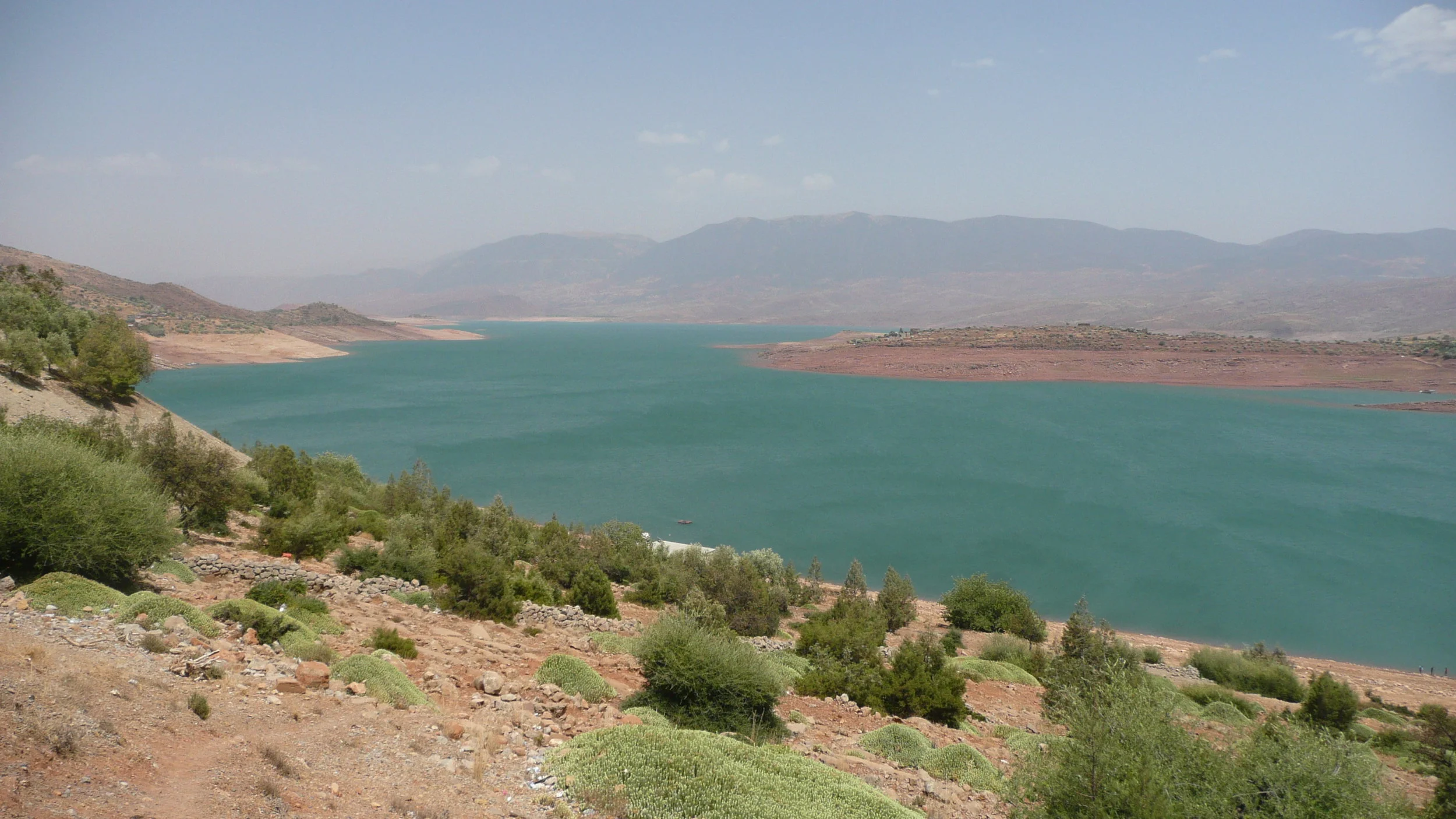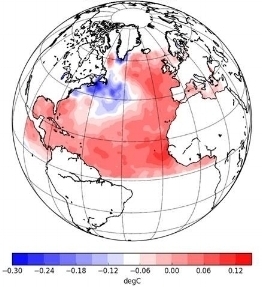Water, Climate Variability and Climate Change in Morocco
The Oum-Er-Rbia watershed is one of Morocco's major river basins in terms of agricultural production, hydroelectric capacity, industry and urban population. There, water is the key limitation to economic and social development. The region suffers from rainfall that is both low on average (about 350mm per year) and highly variable from year to year. This leads to frequent crop loss and makes efficient water planning difficult. Renewable freshwater resources are less than 1000 cubic meters per year per capita—well below the UN's scarcity threshold. On top of that, the area is at highest risk when it comes to climate change, between drastic precipitation decreases and uptick in heat waves and increased rainfall variability. Water management will become even more challenging in the near future, and agricultural policies should adapt accordingly.
promise of predictability
A clear pattern in the mean North Atlantic sea surface temperature (SST) anomaly during summers preceding relatively dry winters (left) versus relatively wet (right) winters in the Oum-Er-Rbia watershed can be used to predict rainfall months in advance and enable more efficient water management decisions.
Dry year SST anomaly
making progress
Inter-annual rainfall variability on top of climate change will have a huge impact on the economy of the Oum-Er-Rbia watershed. Can the agricultural system be more effcient, even optimized, and what would that require? Our research relies on a 3-level modeling approach of climatology (rainfall forecasts and climate change scenarios), hydrology (data assimilation of runoff and river flow from topography) and operations (infrastructure and agricultural planning and management).
Wet year SST anomaly
Project Research Scheme




